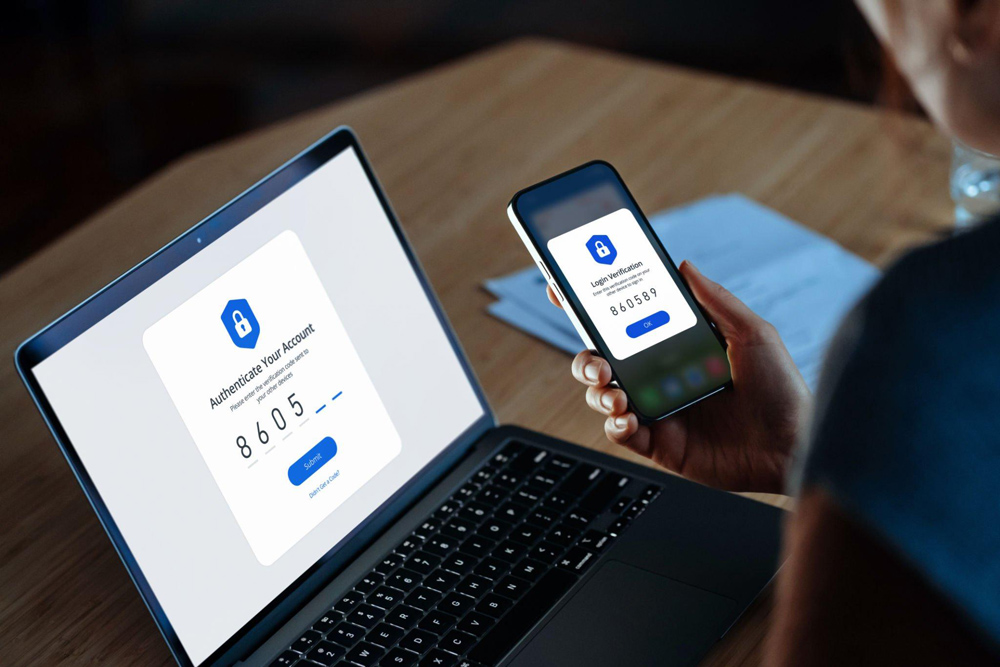Push bombing attacks can be a major threat to the security of your authentication process. These attacks involve sending many push notifications to a user’s device to overwhelm and disrupt the authentication system. With the increasing popularity of push notifications as a means of authentication, it is crucial to be prepared and know how to prevent and mitigate these attacks effectively.
By understanding the vulnerabilities in your authentication process and taking proactive measures, you can ensure the security and reliability of your systems, protecting your users’ sensitive information and maintaining their trust in your platform. Let’s dive into the world of push-bombing attacks and discover effective countermeasures to defend against them.
Table of Contents
What is Push Bombing?
Push bombing is a social engineering technique where threat actors overwhelm users with a flood of push notifications or one-time passwords (OTPs) to exploit fatigue and manipulate behavior. The goal of push bombing attacks is to deceive users into granting access requests or providing login credentials. This attack vector exploits the reliance on push notifications and OTPs for multi-factor authentication (MFA), a method commonly used to enhance security measures. By bombarding users with multiple authentication attempts, push bombing can wear down users’ vigilance or even force them to disable MFA altogether, leaving their accounts vulnerable to unauthorized access.

How Does Push Bombing Work?
The process begins with surveillance, where threat actors gather information about their target’s authentication methods and security posture. Once armed with this knowledge, they access the victim’s credentials through various means, such as phishing-resistant MFA or credential stuffing.
Once the threat actors have obtained valid credentials, they initiate the push bombing attack. This involves bombarding the victim’s device with numerous authentication attempts, creating a sense of fatigue, and potentially forcing the victim to disable MFA altogether. This leaves their accounts vulnerable to unauthorized access.
The impact of push bombing attacks can be detrimental, as it compromises the effectiveness of MFA, one of the primary measures used to enhance security. It undermines the layers of security organizations have in place and hinges on manipulating user behavior and exploiting fatigue. Push bombing attacks highlight the importance of robust security mechanisms and policies to protect against such sophisticated attacks.
Types of Push Bombing Attacks
Push bombing attacks can take various forms, each designed to exploit security vulnerabilities and vectors. One type of push bombing attack involves overwhelming a victim’s device with a barrage of push notification requests. These requests may appear legitimate, convincing the victim to authorize them without suspicion.

Prompt Bombing Attacks
Prompt Bombing Attacks are social engineering attacks that exploit user fatigue and potentially reveal login credentials. Unlike push bombing attacks, which use push notifications to bombard users with repeated authentication prompts, prompt bombing attacks specifically target users through various means, such as email, text messages, or pop-ups.
In a prompt bombing attack, threat actors overwhelm users with authentication prompts, often appearing to be from a legitimate source. These prompts typically require users to enter their login credentials or sensitive information repeatedly. The intention behind this attack is to exhaust the user mentally and emotionally, increasing the likelihood of them disclosing their login credentials out of frustration or confusion. These types of attacks are also known as fatigue attacks.
By exploiting user fatigue, they may inadvertently disclose their valid credentials to the attackers, enabling unauthorized access to their accounts and potentially exposing sensitive information.
To protect against prompt bombing attacks, security teams should educate users about the risks of social engineering attacks and teach them to recognize and report suspicious authentication prompts. Implementing multi-factor authentication (MFA), especially with phishing-resistant methods like biometric or passwordless authentication, can also enhance security and reduce the risk of prompt bombing attacks. Regularly updating security policies and leveraging risk-based authentication can strengthen an organization’s security measures against these sophisticated and evolving attack techniques.

Security Teams and Social Engineering Attacks
Security teams play a critical role in protecting against social engineering attacks by implementing various measures to strengthen the security posture. One important aspect is educating users on password best practices to prevent their credentials from being compromised. This includes creating strong and unique passwords, avoiding password reuse, and regularly updating passwords.
In case of compromised credentials, security teams should enforce password resets to ensure the security of user accounts. Reviewing and configuring multi-factor authentication (MFA) settings can limit unauthorized access to sensitive data. MFA adds an extra layer of security by requiring users to provide additional authentication factors, such as a code from a mobile device or a fingerprint.
Security teams can consider using one-time passwords for sensitive data protection to enhance security further. One-time passwords are unique and expire after a single use, reducing the risk of unauthorized access even if the credentials are compromised.

Prevention Techniques for Push Bombs and Other Network Threats
To protect against future attacks, organizations, and security teams need to adopt robust security measures and implement preventive techniques.
One effective prevention technique is implementing multi-factor authentication (MFA), which adds an extra layer of security by requiring users to provide multiple authentication factors. This can include something the user knows (such as a password), something they have (such as a physical security key), or something they are (such as biometric authentication). By combining these factors, MFA reduces the risk of unauthorized access even if one factor is compromised.
The second way is to limit the number of login attempts a user can make in a given period of time. This can be done by setting up account lockout rules that limit the number of failed login attempts. For example, after 3 unsuccessful login attempts, the user’s account may be locked for 30 minutes before they can attempt to log in again. Organizations should consider implementing two-factor authentication (2FA), at the very least, to further protect user accounts.
The third prevention technique is to establish a strong password policy. Organizations should enforce the use of complex passwords resistant to password-cracking techniques. This includes using a combination of uppercase and lowercase letters, numbers, and special characters. Additionally, organizations should encourage regular password changes and prohibit using easily guessable passwords, such as common words or personal information.
Finally, organizations should regularly monitor their networks for potential malicious activity and take steps to address any suspicious activity. This can include implementing a strong security policy that specifies the actions users must take when they receive suspicious messages or prompts. Security teams should also stay up-to-date on the latest security threats and update their policies accordingly.
Wrapping Up
While push bombing attacks can pose a significant threat to your authentication process, there are strategies and measures you can take to mitigate and prevent them. By implementing strong security measures, using multi-factor authentication, and staying vigilant for any suspicious activity, you can ensure the integrity and security of your authentication process. Remember, staying informed and proactive is key to keeping your systems and data safe from potential attacks.
Organizations should use a layered approach to security to ensure comprehensive coverage against push bombing and other threats. Host-based firewalls should be implemented to restrict inbound and outbound traffic on the network. Network intrusion detection systems can also monitor activities on the network to detect malicious or suspicious traffic, alerting administrators of potential issues. On a final note, organizations should consider using an endpoint detection and response ( EDR) solution to monitor endpoint activity and detect any malicious activity.
For more information on mitigating threats and implementing security measures, subscribe to our monthly newsletter or send us a message!


Recent Comments